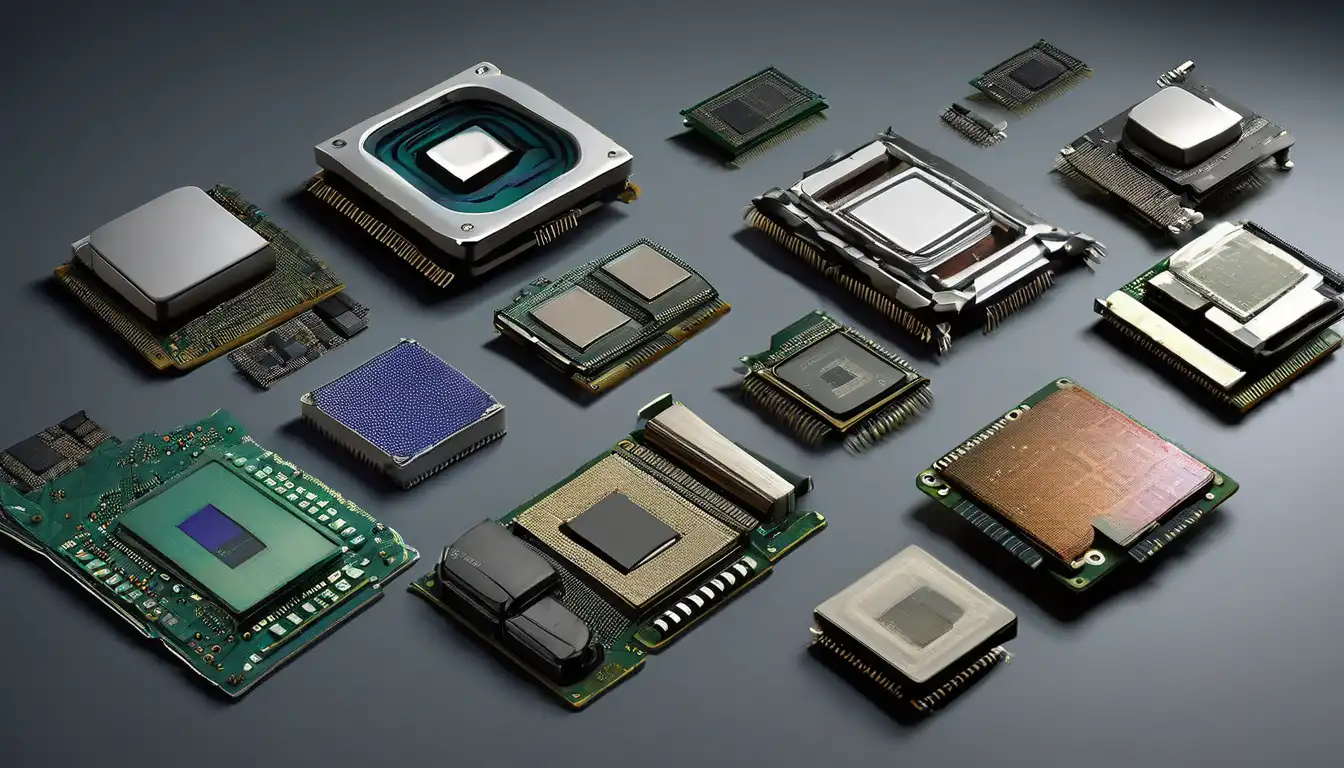The Dawn of Computing: Early Processor Beginnings
The evolution of computer processors represents one of the most remarkable technological journeys in human history. Beginning with massive vacuum tube systems that occupied entire rooms, processors have transformed into microscopic marvels capable of billions of calculations per second. This transformation didn't happen overnight but through decades of innovation, breakthroughs, and relentless pursuit of computational power.
In the 1940s, the first electronic computers used vacuum tubes as their primary processing components. These early processors, such as those in the ENIAC computer, contained approximately 17,000 vacuum tubes and consumed enormous amounts of electricity. Despite their limitations, these pioneering systems laid the foundation for modern computing and demonstrated the potential of electronic data processing.
The Transistor Revolution
The invention of the transistor in 1947 marked a pivotal moment in processor evolution. These semiconductor devices replaced bulky vacuum tubes, offering smaller size, lower power consumption, and greater reliability. The transition to transistors enabled the development of second-generation computers that were more practical for commercial and scientific applications.
By the late 1950s, integrated circuits emerged, allowing multiple transistors to be fabricated on a single silicon chip. This breakthrough paved the way for third-generation computers and set the stage for the microprocessor revolution that would follow. The ability to integrate components dramatically reduced costs while increasing performance and reliability.
The Microprocessor Era Begins
1971 witnessed a landmark achievement when Intel introduced the 4004, the world's first commercially available microprocessor. This 4-bit processor contained 2,300 transistors and operated at 740 kHz – modest by today's standards but revolutionary at the time. The 4004 demonstrated that complete central processing units could be manufactured on a single chip, opening new possibilities for computing.
The success of the 4004 led to more advanced processors like the 8-bit Intel 8080 and Zilog Z80, which powered early personal computers and embedded systems. These processors established the foundation for the personal computing revolution that would transform how people worked, communicated, and accessed information.
The x86 Architecture Dominance
Intel's 8086 processor, introduced in 1978, established the x86 architecture that would dominate personal computing for decades. The 16-bit design offered significant performance improvements over previous 8-bit processors and became the standard for IBM PC compatibles. The x86 architecture's backward compatibility ensured that software investments would be protected across generations.
Throughout the 1980s and 1990s, processor evolution accelerated with the introduction of 32-bit architectures, cache memory, and increasingly sophisticated manufacturing processes. Processors like the Intel 80386 and 80486 brought protected mode operation, virtual memory support, and mathematical co-processors that expanded computing capabilities for both business and scientific applications.
The Clock Speed Race and Multicore Revolution
The late 1990s and early 2000s witnessed an intense competition focused on increasing clock speeds. Processors rapidly advanced from hundreds of megahertz to multiple gigahertz, with manufacturers pushing the limits of silicon technology. However, this approach faced physical limitations as power consumption and heat generation became increasingly problematic.
The industry responded by shifting focus from raw clock speed to parallel processing through multicore architectures. Instead of making single cores faster, manufacturers began integrating multiple processor cores on a single chip. This approach allowed for better performance scaling while managing power efficiency more effectively. Modern processors now commonly feature anywhere from 2 to 64 cores, each capable of handling different tasks simultaneously.
Specialized Processing and AI Acceleration
Recent processor evolution has seen increased specialization to handle specific workloads more efficiently. Graphics Processing Units (GPUs) evolved from dedicated graphics cards to general-purpose parallel processors capable of handling complex computational tasks. This development has been particularly important for artificial intelligence and machine learning applications.
Modern processors now incorporate specialized components like Tensor Processing Units (TPUs) and Neural Processing Units (NPUs) designed specifically for AI workloads. These specialized cores can perform matrix operations and neural network computations orders of magnitude faster than traditional CPU cores, enabling real-time AI applications on consumer devices.
Current Trends and Future Directions
Today's processor evolution focuses on several key areas including energy efficiency, heterogeneous computing, and advanced manufacturing processes. The transition to smaller nanometer processes continues, with 3nm and 2nm technologies promising even greater transistor density and power efficiency. Chiplet architectures, where multiple smaller dies are packaged together, represent another significant innovation.
Quantum computing represents the next frontier in processor evolution. While still in early stages, quantum processors leverage quantum mechanical phenomena to perform calculations that would be impossible for classical computers. As research progresses, quantum processors may eventually complement traditional processors for specific problem domains.
The evolution of computer processors has been characterized by exponential growth in performance, often described by Moore's Law. While the physical limits of silicon-based computing are approaching, new materials like graphene and carbon nanotubes, along with novel architectures like neuromorphic computing, promise to continue this remarkable journey of innovation.
The Impact on Modern Society
The processor evolution has fundamentally transformed nearly every aspect of modern life. From enabling global communication networks to powering scientific research, medical advancements, and entertainment systems, processors have become the invisible engines driving technological progress. The continuous improvement in processing power has made possible applications that were once considered science fiction.
As processors continue to evolve, they will enable new capabilities in areas like autonomous systems, personalized medicine, and sustainable energy solutions. The journey from vacuum tubes to modern multicore processors demonstrates humanity's remarkable ability to innovate and overcome technical challenges, setting the stage for even more astonishing developments in the decades to come.
